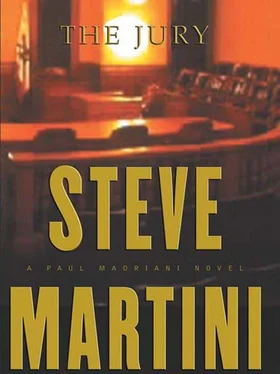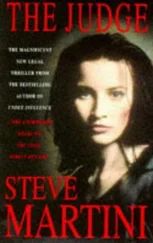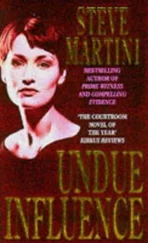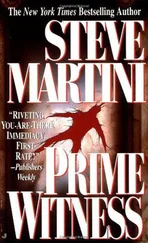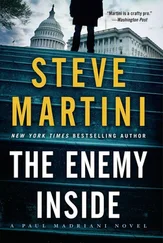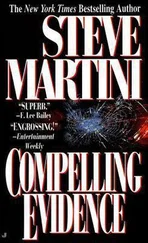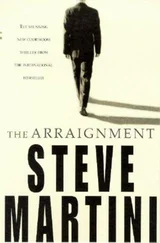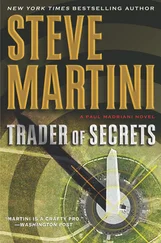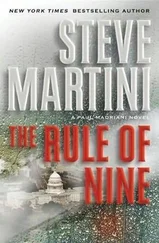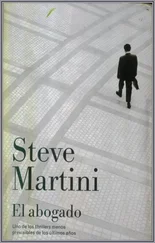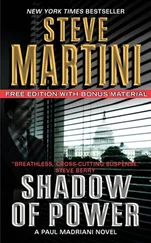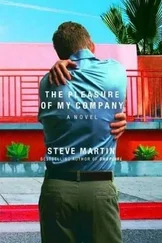Steve Martini - The Jury
Здесь есть возможность читать онлайн «Steve Martini - The Jury» весь текст электронной книги совершенно бесплатно (целиком полную версию без сокращений). В некоторых случаях можно слушать аудио, скачать через торрент в формате fb2 и присутствует краткое содержание. Год выпуска: 0101, Издательство: Penguin Group US, Жанр: Триллер, на английском языке. Описание произведения, (предисловие) а так же отзывы посетителей доступны на портале библиотеки ЛибКат.
- Название:The Jury
- Автор:
- Издательство:Penguin Group US
- Жанр:
- Год:0101
- ISBN:нет данных
- Рейтинг книги:3 / 5. Голосов: 1
-
Избранное:Добавить в избранное
- Отзывы:
-
Ваша оценка:
- 60
- 1
- 2
- 3
- 4
- 5
The Jury: краткое содержание, описание и аннотация
Предлагаем к чтению аннотацию, описание, краткое содержание или предисловие (зависит от того, что написал сам автор книги «The Jury»). Если вы не нашли необходимую информацию о книге — напишите в комментариях, мы постараемся отыскать её.
The Jury — читать онлайн бесплатно полную книгу (весь текст) целиком
Ниже представлен текст книги, разбитый по страницам. Система сохранения места последней прочитанной страницы, позволяет с удобством читать онлайн бесплатно книгу «The Jury», без необходимости каждый раз заново искать на чём Вы остановились. Поставьте закладку, и сможете в любой момент перейти на страницу, на которой закончили чтение.
Интервал:
Закладка:
He has the upper body of an NFL linebacker, with a waist that tapers to thirty-four inches and biceps that move like boa constrictors under the arms of his tight sport coat.
De Angelo worked his way up to lieutenant through Vice and did undercover with the narcs before that. He has more than two hundred homicide cases under his belt, everything from winos clubbed in alleys to the abduction and murder of a local software magnate. He has held hands with snitches to get rollover benefits in murder-for-hire cases and has served on the local violent-crimes task force with state and federal agents. He has instincts and can feel his way around the hairy underbelly of crime even when it is not possible to see very well. De Angelo has driven much of the case against my client based on feelings; call it a cop’s intuition.
This morning Tannery has him on the stand, fleshing out the grisly details of Kalista Jordan’s murder and the discovery of body parts on the Silver Strand, the closest thing they have to the scene of the crime.
“We figure the killer used a plastic bag to dump the body, but it didn’t stay together,” says de Angelo. “Either the surf opened it up, or maybe rocks, or sharks. We can’t be sure.”
“Did you find evidence that the victim’s torso had been mauled by sharks?”
“No. But there were some ragged pieces of black plastic caught under a cord that was wrapped around her neck. The one used to tie the plastic around the body.”
“So that we don’t confuse the jury, you’re not talking about the nylon cable tie used to strangle the victim?”
“No. That was underneath the plastic we think was wrapped around the body. We believe that plastic of some kind had been tied around the body, probably to conceal it until it went into the water, and something ripped it off.”
“And all that was ever recovered was the victim’s torso and head?”
“And one arm,” says de Angelo. He has an advantage over most of the other witnesses. He has a permanent seat at the prosecution counsel’s table as the authorized representative of the state and has heard all the earlier testimony to this point.
“Lieutenant de Angelo, have you ever had occasion to investigate any other homicides in which the victim has been dismembered in this way?”
“If you mean arms and legs severed, the answer is yes. If you mean cut up in the way that this victim was, the answer’s no.”
“There was something unique about this case?”
“Objection. The witness is not a medical doctor.”
“But he has experience investigating similar cases,” says Tannery. “How many cases involving dismemberment have you done, Lieutenant?” He doesn’t wait for the judge to make a ruling, and Coats lets him get away with it.
“Eight.”
“In fact, your department has seen enough of these kinds of cases, dismemberment and disposal in the ocean or the harbor, that they have a name for them, don’t they?”
“Yeah.”
“And what is that name, Lieutenant?”
“Jigsaw Jane, or John, depending on gender,” says de Angelo. “Usually you find heads bobbing in the water.”
One of the older guys on the jury, a retired navy demolition expert, sniggers and covers his mouth with his hand. His forearm under the hair is a mosaic of tattoos. The women on the panel do not smile; instead, they are looking at my client for a reaction. Crone offers none. He is busy as always, taking notes.
“I believe, Mr. Tannery, that there was an objection. I’ll overrule it, allow the witness to answer the question.” Coats has not even lost his place.
But de Angelo has. “What was the question?”
“Was there something unique about the dismemberment of Kalista Jordan, say from the other cases you’ve seen?” asks Tannery.
“Oh, yeah. That’s right. Yeah, there was.”
“And what was that?”
“Two things, really. The legs and arms were severed cleanly at the joints. And the head was still connected to the torso.”
“Let’s take the legs and arms first,” says Tannery. “Did you draw any conclusions from the manner in which these were severed?”
“We did. There was a kind of surgical nature to the dismemberment. We concluded that the person or persons who did it knew what they were doing. We believe that they probably had some special training.”
“Objection.”
“Overruled,” says Coats.
“What kind of training?” asks Tannery.
“They knew something about medical science, particularly anatomy. Might have had at least minimal experience dissecting or performing surgery on the human body.”
“Are you saying that it is likely that the perpetrator was a medical doctor?”
“It’s possible,” says de Angelo.
Tannery looks toward our table and Dr. Crone who doesn’t even suspend his note taking to lift his gaze.
“You said there was something else unusual about this case, something having to do with the victim’s head?”
“Yeah. It was still attached to the body,” says de Angelo. “We wondered why. Usually, if a perpetrator goes to all the trouble to cut off arms and legs, he’s. .”
“Objection. Assumes facts not in evidence.” I’m into it before he can finish.
“Restate your answer,” says the judge.
De Angelo gives the D.A. a blank stare. He doesn’t understand the problem.
“It assumes a male perpetrator,” says Tannery.
“Oh.” He thinks for a second. “We assume they go to all that trouble, whoever it is”-he looks directly at me for emphasis-“is gonna take the head off, too. But here they don’t. You have to wonder why?”
“Why would you assume they’d cut off the head?”
“Why do they go to all the trouble to cut up the body in the first place?” says de Angelo. “Because they’re trying to make it difficult to identify. You take off the hands, there’s no fingerprints assuming the hands aren’t found. You take off the head, it makes it that much harder. But they didn’t here.”
“I see. And you don’t have an answer as to why?”
De Angelo shakes his head. “It’s just unusual. Doesn’t fit the normal pattern. If anything like this can be called normal,” he says. “So we thought whoever killed Kalista Jordan was trying to do a copycat.”
“Can you explain for the jury?” asks Tannery.
De Angelo turns toward the box. “There were two murders almost three years ago now. The bodies of two women were dumped in the harbor. We found the torsos with the heads attached. Arms and legs had been cut off. It was in all the papers. Those cases got a lot of publicity because it looked like a serial murder. Papers always pick up on that,” he says.
“Unfortunately, sometimes it becomes an invitation for somebody who’s looking for an opportunity. You get a person, wants to kill his wife, or his girlfriend. He sees the article. So he tries to make it look like the same M.O. They copycat it. Usually they don’t succeed.”
“And why is that?”
“Little details,” says de Angelo. “Things we never disclose to the media. For example, in this case, the earlier jigsaws, out in the harbor. They were in fact done with saws. Bones cut right through like a butcher would do it with a saw. We found tool marks from the teeth of a saw blade. Probably a hacksaw. But that wasn’t done in this case.”
“You’re talking about Kalista Jordan?”
“Right. Here, the amputation of the arms and legs was done clean, at the joints. Somebody knew right where to go, and they used a sharp instrument to get all the ligaments and tendons.”
“And this clean amputation, at the joints, is what causes you to believe that the killer possibly had medical training?”
“Correct.”
“Therefore, you don’t believe these earlier cases are related?” Tannery is driving a wedge, anticipating that we may try to defend using the age-old SODDI, Some Other Dude Did It, in this case some crazed serial killer. If we could produce an alibi for Crone in the earlier cases, this would present complications for the state.
Читать дальшеИнтервал:
Закладка:
Похожие книги на «The Jury»
Представляем Вашему вниманию похожие книги на «The Jury» списком для выбора. Мы отобрали схожую по названию и смыслу литературу в надежде предоставить читателям больше вариантов отыскать новые, интересные, ещё непрочитанные произведения.
Обсуждение, отзывы о книге «The Jury» и просто собственные мнения читателей. Оставьте ваши комментарии, напишите, что Вы думаете о произведении, его смысле или главных героях. Укажите что конкретно понравилось, а что нет, и почему Вы так считаете.
